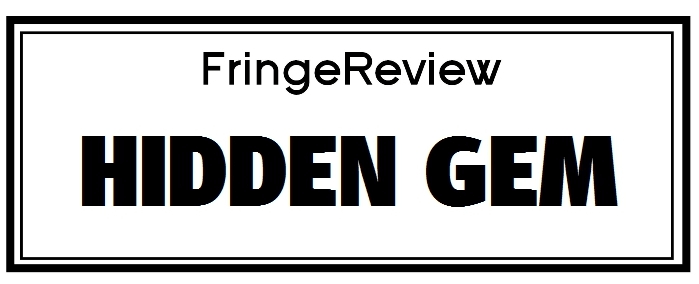Brighton Year-Round 2022
Kevin Allen and Ellie Blackshaw Viola Sonatas
Kevin Allen and Ellie Blackshaw

Genre: Live Music
Venue: St Nicholas Church, Dyke Road, Brighton
Festival: Brighton Year-Round
Low Down
Kevin Allen and Ellie Blackshaw play Viola Sonatas by Alan Rawsthorne and Kevin Allen himself.
Review
A remarkable duo offered two distinguished British Viola Sonatas we don’t know so well: Brighton though does know composer/pianist Kevin Allen and violinist and viola-player Ellie Blackshaw – whose own Trio in F was premiered at the New Music Brighton concerts in 2017.
The works are Allen’s own Viola Sonata of 1968-71, performed on a number of occasions and recorded too with the composer ad Peter Sulski. And to begin Alan Rawsthorne (1905-71) whose own Sonata dates from 1935. It would have been part of that clutch of late-1930s works that helped make Rawsthorne’s name but for the mss being burnt in a wartime fire. Luckily the work was reconstructed much later – in 1953 – from the pianist’s part, and it’s slowly making its way in the repertory.
The players both have this dark lyricism in their fingers. Allen naturally is a consummate interpreter – he’s managed much recently from Brahms through Schoenberg and Berg, his core repertoire, as well as say the Bridge Piano Sonata. Blackshaw though primarily a violinist masters this incredibly challenging repertoire – particularly the Allen – as if she’s always been a modernist viola-player .
The Rawsthorne’s very much got the mature fingerprints of the sour-toned lyricism that marks him out. Think the score of The Cruel Sea as shorthand. After a slow Maestoso introduction an assertive Molto Allegro with a motor drive takes over, a bit like a baroque sonata in fact, though there’s little neo-classic about the continual ebb and flow of tempi and the way it eases into the second movement after a small flourish.
The second movement Scherzo is Beethovenian in its rough jokey sense of what a scherzo is, the instruments jumping om each other, in a Hayden-seeking-Beethoven contrast. The third Adagio is full of glinting half-lights and chiming piano quietly underpinning the viola: a basically much slower pulse, building very like an prophetic elegy. It’s only in the final Rondo: Allegro commodo movement we see something like a conventionally-exercised allegro finale, pulsing and powering in the motor rhythms and off-kilter melodies Rawsthorne’s so rich in. Whirling in a scherzo-like fleet – and far less jokey manner – it builds and builds to a terrific climax with an emphatic fermata. It’s a remarkable discovery, and really should be core repertoire. There’s a fine recording on Naxos which can be played on YouTube.
Allen’s Viola Sonata is more familiar. Premiered at the SNCM in 1971 – its first two movements at least, the last deemed then unplayable – the composer has performed with with Peter Sulski and others and as mentioned it’s recorded too. An absolute classical twelve-tone piece (not one of those total serialist works where even rests are serial for instance), its origins are darker too, and emergent themes never dreamt in serialism or the composer – as he points out – emerge to make this very far from some late serial works of the time.
Blackshaw negotiates the broken lyricism of the first movement as the instruments assert a melodic tone row – Allen demonstrates this at the start – and we move along powerful expressive language asserting dark purposes. It’s a work redolent of that kind of 1960s optimism for the future of serial music, and embraces the real heft and even joy of its time: a work knowing itself still at the cutting-edge of things, as all innovative music must do.
The slow movement is the shocker. Allen’s identified the unconscious echo of the same Dowland lute song Britten used for his 1950 viola/piano Lachrimaye (Allen’s a lutenist too and has written a Lute Sonata and other works for the instrument). This is ‘If my complaints could passions move’ and it echoes this melancholy inscribed as the slow movement’s DNA. It’s a hypnotic traversal too, and the heart of this work. The finale skittering and scudding is though something very like an arrival, difficult to describe as it’s also full of sudden ritornellos and sidelights interrupting what seems an inevitable flow. Again, the sudden picking-off of piano against viola, the way Blackshaw negotiates the crystalline world of this work, is absorbing.
Allen handles and moulds the impassioned opening section with crispness and aplomb, the slow movement with supportive quiet chords, and in the finale steers again a lucid course between expressivity – which he never lacks – and the emergent rigour of twelve-tone study.
The work was privately recorded. Both works really need hearing twice. A stunningly rewarding concert. Not what you’d expect in many church-based recital series. Again praise for St Nicholas for mounting these, and most today for Blackshaw and Allen giving of their musicianship as composer/performers.


















































